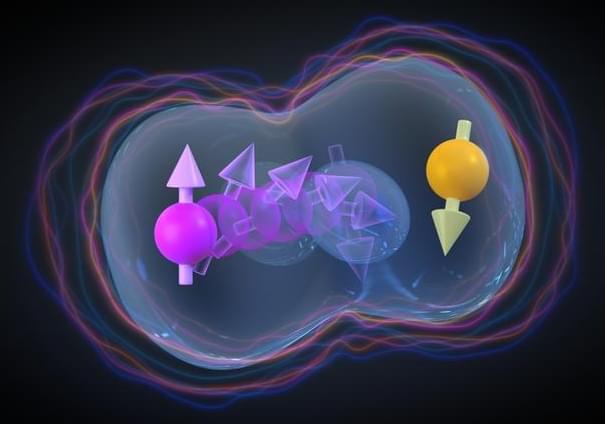Researchers from the University of Basel and the NCCR SPIN have achieved the first controllable interaction between two hole spin qubits in a conventional silicon transistor. The breakthrough, reported in Nature Physics (“Anisotropic exchange interaction of two-hole spin qubits”), opens up the possibility of integrating millions of these qubits on a single chip using mature manufacturing processes.
Two interacting hole-spin qubits: As a hole (magenta/yellow) tunnels from one site to the other, its spin rotates due to spin-orbit coupling, leading to anisotropic interactions represented by the surrounding bubbles. (Image: NCCR SPIN)
The race to build a practical quantum computer is well underway. Researchers around the world are working on a huge variety of qubit technologies. So far, there is no consensus on what type of qubit is most suitable for maximizing the potential of quantum information science.
